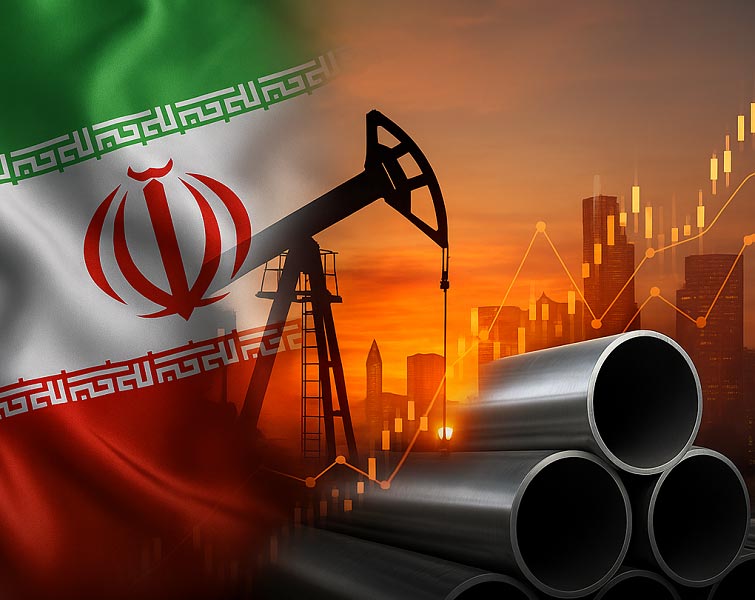Following the escalation of direct conflicts between Iran and Israel, global markets have experienced a wave of volatility and uncertainty. These developments — particularly threats surrounding the strategic Strait of Hormuz — have not only disrupted the energy market but also shaken the steel supply chain, international shipping routes, and broader macroeconomic policies.
This analytical report explores the implications of this geopolitical crisis on commodity markets, with a particular focus on the global and Iranian steel industry.
Oil and Gas: The Driving Force of the Steel Production Chain
In response to the recent conflict, Brent crude oil prices have surged by 7 to 13 percent, reaching their highest levels in recent months. The primary reason for this spike is the potential closure of the Strait of Hormuz by Iran — a route through which nearly 20% of global oil exports and a significant portion of Qatar’s LNG shipments pass.
This rise in energy prices has placed heavy pressure on steel producers in energy-importing countries such as India, Turkey, and parts of Europe. In Iran, although the country benefits from domestic energy resources, global market fluctuations can still impact the export prices of steel products.
Raw Materials and Logistics: Increased Pressure on Stable Supply
As maritime risks rise in the Persian Gulf, concerns have grown over the secure transportation of key raw materials like iron ore, coal, and ferroalloys. Major international shipping companies have warned that if the attacks continue, current maritime routes may become unsustainable.
Since the beginning of the conflict, insurance rates for vessels passing through the Strait of Hormuz have surged by over 60%. In Iran, this situation could disrupt the clearance of raw materials from ports and raise transportation and insurance costs for exports.
Capital Flight to Safe Assets: Reactions in Financial and Base Metals Markets
Amid escalating tensions, global equity markets have declined, prompting investors to shift toward safe-haven assets such as gold, the U.S. dollar, and the Swiss franc. While gold has shown a modest upward trend, analysts believe a major price jump would only occur if energy supply disruptions become a reality.
Base metals like copper, aluminum, and nickel remain in a fragile state, due to intertwined factors including lower industrial demand, rising logistics costs, and overall market uncertainty.
Macroeconomic Impacts on the Steel Industry: Inflation, Energy, and Demand Risk
Rising energy and transport costs are directly increasing steel production expenses. Simultaneously, the inflationary outlook resulting from higher oil prices may discourage central banks from lowering interest rates — potentially exacerbating slowdowns in key steel-consuming sectors such as construction. This could result in a medium-term decline in steel demand.
Chilan’s Recommendations for Steel Industry Stakeholders
In this volatile and high-risk environment, Iranian steel producers should consider multi-faceted strategies to ensure production continuity and export competitiveness:
Smart pre-purchasing of energy resources to stabilize production costs during market turbulence
Review and renegotiation of maritime transport contracts, particularly regarding export insurance coverage
Diversification of raw material supply sources to reduce vulnerability to disrupted trade routes
Implementing price risk management mechanisms in export contracts to mitigate global market shocks
Continuous monitoring of global monetary and fiscal policy changes, especially in export destinations
The steel market stands exposed to waves triggered by geopolitical developments. Accurate assessment, strategic responsiveness, and data-driven decision-making will be critical for the survival and growth of industry players in the volatile landscape ahead.



